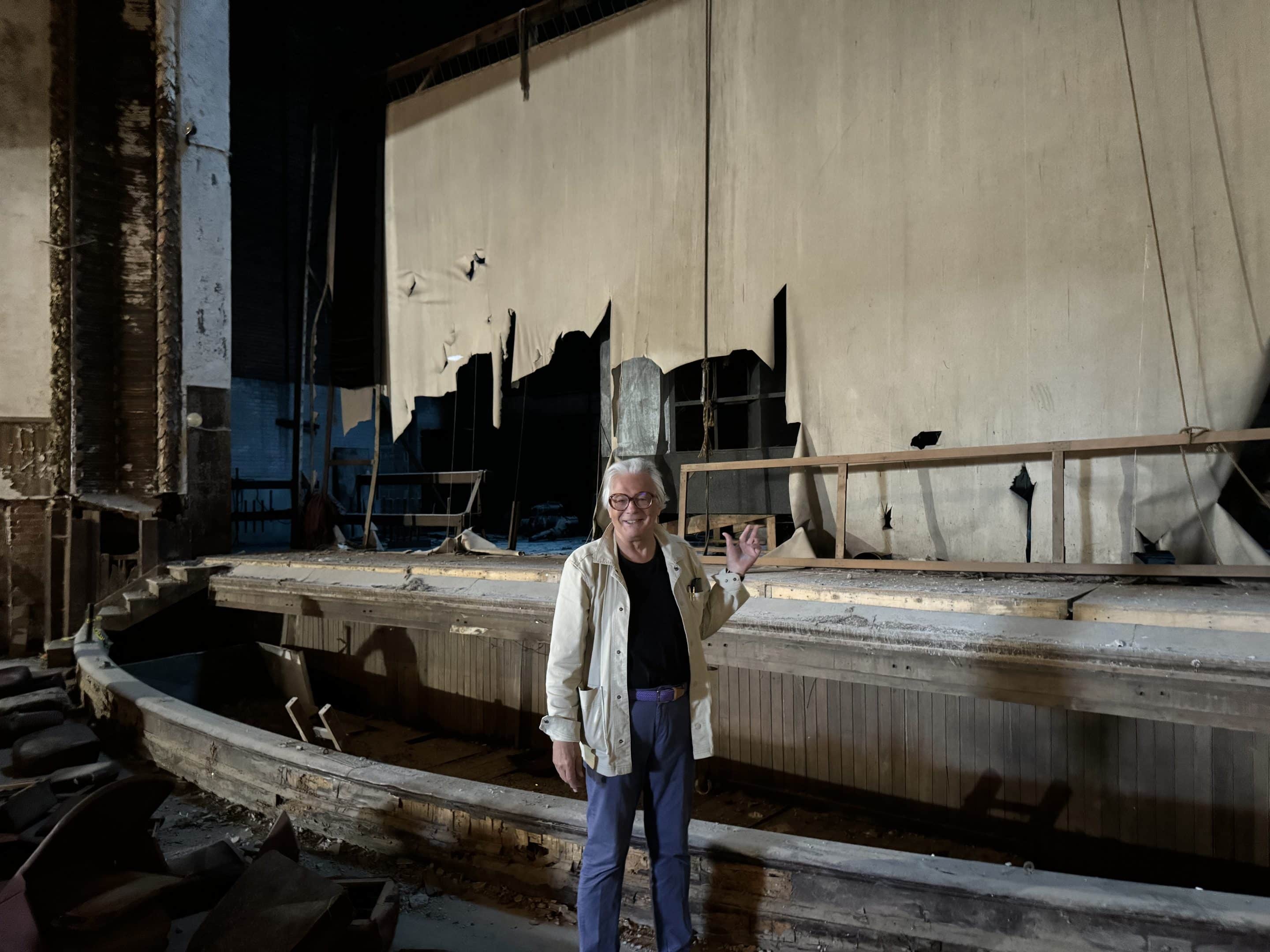MIFA Executive Artistic Director Don Sanders stands in front of the Victory Theatre’s stage and orchestra pit amidst renovation of the space.
Reminder Publishing photo by Trent Levakis
HOLYOKE — As progress continues on the rehabilitation project of the 1920 Broadway style Victory Theatre in downtown Holyoke, Reminder Publishing was invited by MIFA Executive Artistic Director Don Sanders for a tour of the building mid-renovation as excitement continues to loom over what is expected to be a huge cultural and tourist addition to the community.
Construction bid documents for the $71 million planned rehabilitation and reopening are expected to be finalized by the end of the summer.
Sanders explained the Victory’s birth in Holyoke a century ago came from love and admiration for New York City’s Broadway scene and today remains the lone Broadway size theater in the entire Connecticut River Valley.
“That’s really one of the main reasons to restore it and get it functional again because not only is it great and beautiful, it also has the real capacity to host tier A Broadway tours and other large scale because it is 1,600 seats,” Sanders said.
Sanders explained when the Victory first stood in the 1920s it was one of eight theaters across the city, including a 3,000-seat opera house build in 1874. The entertainment hub created within the growing industrial city that was Holyoke created a source for live arts and entertainment that went on for decades.
In 2009, MIFA acquired the 81-89 Suffolk St. site that has now been closed for 45 years. In the weeks prior to visiting the restoration site, heavy machinery has been positioned inside with ongoing work on the roof and ceilings for the building.
When entering the Victory, the outer lobby fits the traditional look for a playhouse and includes many original pieces from the original doors to the design throughout the building.
“This is all historic restoration. It goes back the way it was. We would have had to rebuild [a lot of this], but we found them,” Sanders said of the restoration work inside the building.
Still standing from the building’s origin is Vermont marble and Brazilian Mahogany, just two examples Sanders said will be restored with its original charm along with other areas throughout the theater.
In the main auditorium the seating space had been opened up as renovations continued on the space and stage. The theater’s original seats have been removed for remodeling and will be restored for the 1,600-seat theater.
“All the seats are going to be replaced exactly as they were but as new seats. We’ve kept the end rails panels of each row and each one of the seats has a beautiful maple arm rest,” Sanders said. “We tried to save absolutely as much because quite frankly, those things are so expensive now.”
Sanders explained most Broadway Houses currently on Broadway range from 1,100 seats to almost 2,000.
“That’s why the reason for all the fuss about this is to make this be a theater that we don’t have in the three counties. We have lots of great spaces, wonderful spaces, but none of them can house a tier A Broadway show or really advanced operas,” Sanders said.
The second level contains the remainder of seating but underneath it the steel beam structure was in sight showing the impressive architecture that creates an unobstructed view while also serving as acoustics in the theater.
An orchestra pit is also being remodeled right in front of the stage. The space can also fill additional seating for shows with no orchestra involved.
Sanders said the flexibility of the theatre will provide many opportunities for the space to be utilized in the region.
“This is really a performing arts center,” Sanders added.
Sanders also showed firsthand where the recently restored murals will hang alongside the theater’s stage. In the spring a $400,000 restoration of two 23-foot tall murals created by Italian Immigrant and artist Vincent Maragliotti in 1942 was completed. The murals indicate the United States’ victory in World War II.
While complete restoration and opening of the space is aimed for fall 2026, Sanders said he will maintain his optimism for the project and is looking forward to being able to celebrate what is expected to be a huge addition to the city and region.
“I love for people to understand that there’s of course a cultural reason, but also a real practical reason. We are in a sector of the country where there is no theater that can house this kind of tourism so we’re not only missing out not only on the entertainment fun but the economic benefits,” Sanders said. “It also opens up the possibility of creating shows here. The one thing you have to have is the means of production to do it.”



